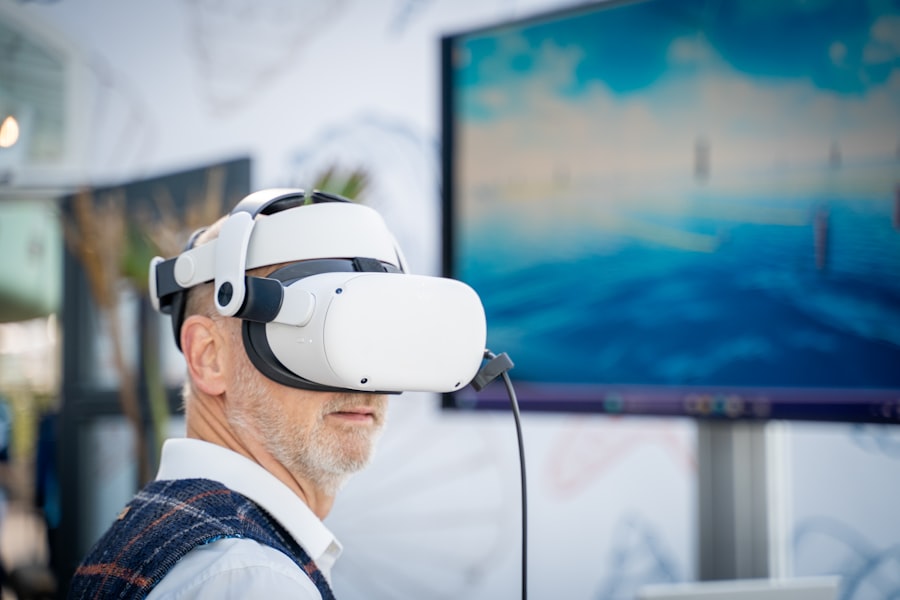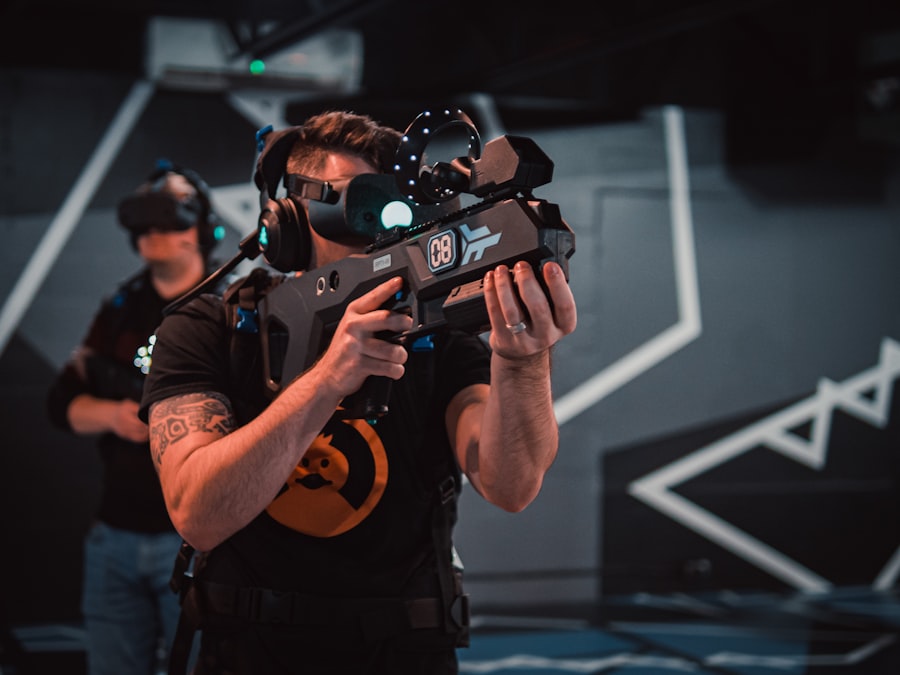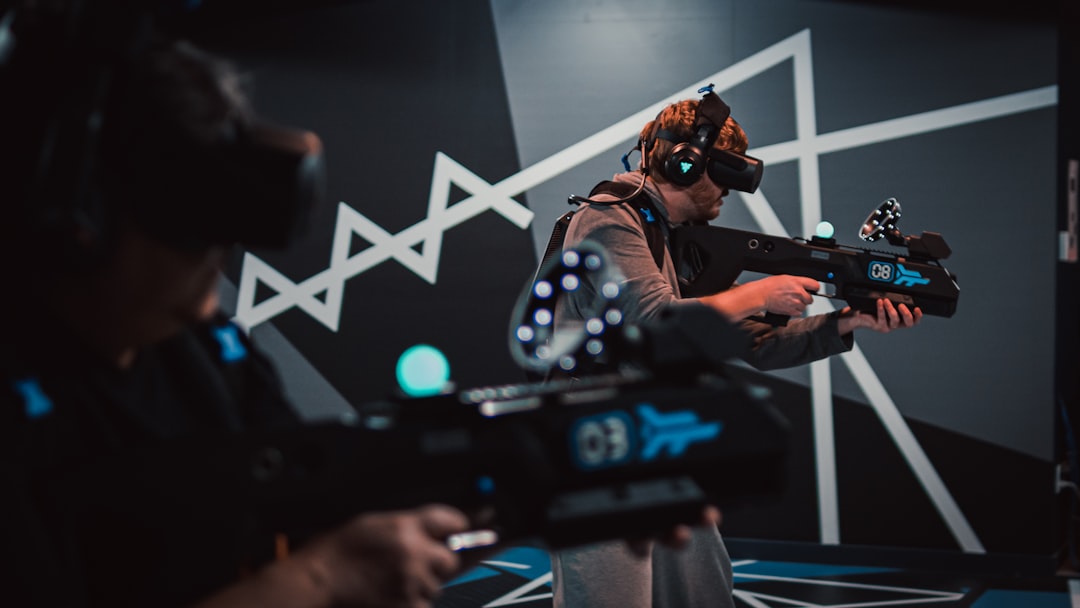The Metaverse represents a convergence of virtual reality (VR), augmented reality (AR), and the internet, creating an expansive digital universe where users can interact with each other and their environment in real-time. This concept has evolved from early online gaming and social platforms into a more immersive experience that encompasses various aspects of life, including work, play, and social interaction. The term “Metaverse” was popularized by Neal Stephenson’s 1992 science fiction novel “Snow Crash,” where it described a virtual reality space populated by avatars of real people.
Today, the Metaverse is not merely a fictional concept but a burgeoning reality, driven by advancements in technology and a growing interest in virtual experiences. In its essence, the Metaverse is a collective virtual space that exists parallel to our physical world. It is characterized by persistent environments that continue to exist and evolve even when users log off.
This digital realm is not confined to a single platform or application; rather, it encompasses a multitude of interconnected spaces where users can engage in various activities, from gaming and socializing to attending concerts and conducting business meetings. The Metaverse is built on the foundation of blockchain technology, which enables secure transactions and ownership of digital assets, further enhancing the user experience by allowing for true ownership of virtual goods.
Key Takeaways
- The Metaverse is a virtual reality space where users can interact with a computer-generated environment and other users.
- Creating an avatar allows users to represent themselves in the Metaverse with a customizable digital persona.
- Navigating the Metaverse involves using virtual reality technology to move and interact within the digital environment.
- Customizing your avatar allows for personalization and self-expression within the Metaverse.
- Interacting with others in the Metaverse involves socializing, collaborating, and engaging in virtual activities with other users.
Creating Your Avatar
Customizing Your Digital Self
The process of avatar creation often involves selecting physical attributes such as skin tone, hair style, clothing, and accessories, allowing users to craft a persona that reflects their identity or aspirations.
Avatars and Social Dynamics
This customization is not merely superficial; it plays a crucial role in how individuals interact with others in the Metaverse. The significance of avatars extends beyond mere appearance; they are integral to the social dynamics within the Metaverse. An avatar can convey personality traits, interests, and even emotional states through gestures and expressions.
Exploring Identity in a Virtual World
For instance, a user might choose to create an avatar that exudes confidence through its posture and facial expressions, while another might opt for a more whimsical design that reflects a playful nature. This ability to curate one’s digital self fosters a sense of agency and creativity, allowing users to explore different facets of their identity in a safe and engaging environment.

Navigating the Metaverse requires an understanding of its diverse landscapes and the tools available for exploration. Users can traverse various virtual worlds using different devices, including VR headsets, desktop computers, and mobile devices. Each platform offers unique experiences; for example, VR headsets provide an immersive experience that allows users to feel as though they are physically present in the virtual environment, while desktop interfaces may offer more straightforward navigation through point-and-click interactions.
As users explore the Metaverse, they encounter a myriad of environments ranging from serene landscapes to bustling urban centers. Each space is designed with specific purposes in mind—some are dedicated to gaming, while others serve as social hubs or marketplaces for digital goods. Understanding how to navigate these spaces effectively is essential for maximizing engagement and enjoyment.
Users often rely on maps or guides provided within the platforms to orient themselves and discover new areas. Additionally, many platforms incorporate social features that allow users to connect with friends or join groups based on shared interests, enhancing the sense of community within the Metaverse.
Customizing Your Avatar
| Avatar Customization | Metrics |
|---|---|
| Number of available options | 100+ |
| Customization categories | Face, hair, clothes, accessories |
| Cost of premium options | Varies |
| Popular customization choices | Hairstyle, facial features, outfits |
Customization goes beyond initial avatar creation; it is an ongoing process that allows users to adapt their digital selves as they engage with the Metaverse. Many platforms offer extensive libraries of clothing, accessories, and animations that users can purchase or earn through participation in events or activities. This continuous customization enables users to express their evolving identities and preferences over time.
For instance, a user might start with a basic outfit but later acquire unique items that reflect their achievements or experiences within the Metaverse. Moreover, customization can also extend to functional aspects of avatars. Some platforms allow users to equip their avatars with special abilities or tools that enhance gameplay or social interaction.
For example, an avatar might gain access to unique dance moves during virtual parties or special skills that aid in completing quests in gaming environments. This level of personalization not only enriches the user experience but also fosters a sense of ownership and investment in one’s avatar.
Interacting with Others in the Metaverse
Social interaction is at the heart of the Metaverse experience, enabling users to connect with friends, meet new people, and collaborate on various projects. Communication within these virtual spaces often occurs through voice chat, text messaging, or even non-verbal cues expressed through avatars’ movements and gestures. This multifaceted approach to interaction allows for rich social experiences that mimic real-life communication while also introducing unique elements inherent to virtual environments.
These events often feature live performances or interactive elements that encourage audience participation, creating a sense of shared experience among attendees. Additionally, many platforms incorporate features such as friend lists and community groups that help users maintain connections and foster relationships over time.
The ability to form friendships and collaborate with others enhances the overall appeal of the Metaverse as a social space.
Embracing Virtual Reality

Immersive Experience and Accessibility
The sensation of being physically present in a digital space allows for deeper engagement with content and interactions with other users. This technology has the potential to revolutionize the way we experience digital content, making it feel more real and engaging than traditional screens.
Virtual Activities and Experiences
In VR environments, users can experience activities such as attending live concerts where they feel as though they are standing in front of their favorite artists or participating in thrilling adventures like exploring alien planets or solving mysteries alongside friends. These experiences are designed to be highly engaging and interactive, allowing users to feel like they are an integral part of the experience.
Emotional Connections and Future Developments
The immersive nature of VR enhances emotional connections to experiences and fosters a sense of presence that traditional screens cannot replicate. As developers continue to innovate and create more sophisticated VR experiences, the potential for new forms of entertainment and social interaction within the Metaverse expands exponentially. This has significant implications for the future of entertainment, socialization, and beyond.
Embodying Your Avatar
Embodying your avatar involves fully immersing yourself in the role you have created within the Metaverse. This process goes beyond simply controlling your avatar; it encompasses adopting its persona and engaging with others through its lens. Users often find themselves expressing emotions or reactions through their avatars that mirror their real-life feelings or aspirations.
For instance, someone who may be shy in real life might find confidence in their avatar’s bold design and expressive movements, allowing them to interact more freely with others. This embodiment can lead to transformative experiences where individuals explore aspects of their identity they may not typically express in their daily lives. The anonymity provided by avatars allows for experimentation with different personas without fear of judgment.
As users navigate social situations within the Metaverse, they may discover new interests or develop skills they had not previously considered. This exploration can be empowering, fostering personal growth and self-discovery through virtual interactions.
The Future of the Metaverse
The future of the Metaverse holds immense potential as technology continues to advance at an unprecedented pace. With developments in artificial intelligence (AI), machine learning, and blockchain technology, we can expect increasingly sophisticated virtual environments that offer richer experiences for users. As more industries recognize the value of virtual spaces for collaboration and engagement, we may see an expansion of professional applications within the Metaverse—ranging from virtual offices to training simulations.
Moreover, as user-generated content becomes more prevalent, individuals will have greater opportunities to shape their environments and experiences within the Metaverse. This democratization of content creation could lead to diverse ecosystems where creativity flourishes and new forms of expression emerge. The integration of augmented reality into everyday life may also blur the lines between physical and digital spaces, allowing for seamless transitions between both realms.
The possibilities are boundless as we venture further into this digital frontier, shaping not only our experiences but also our relationships with technology and each other.
If you’re interested in exploring the potential impact of the metaverse on education and learning, you may want to check out this article on metaverse and industries: education and learning. It delves into how virtual environments can revolutionize the way we teach and learn. Additionally, if you’re curious about what Albert Einstein would have to say about the metaverse, you can read this thought-provoking piece on if we asked Albert Einstein about the metaverse, what would he say. It offers a unique perspective on the potential of this emerging technology.
FAQs
What is a metaverse avatar?
A metaverse avatar is a digital representation of a user in a virtual environment, such as a virtual reality or augmented reality space. It can be customized to reflect the user’s appearance, style, and preferences.
How is a metaverse avatar created?
Metaverse avatars can be created using various tools and platforms, such as virtual world software, gaming engines, or specialized avatar creation software. Users can customize their avatars by choosing features like hair color, clothing, accessories, and body shape.
What can a metaverse avatar do?
In the metaverse, avatars can interact with other users, explore virtual environments, attend events, participate in activities, and even engage in virtual commerce. They can also represent the user in virtual meetings, conferences, and social gatherings.
Can a metaverse avatar be personalized?
Yes, metaverse avatars can be personalized to reflect the user’s individuality and preferences. Users can customize their avatars’ appearance, clothing, accessories, and even their behavior and expressions.
Are metaverse avatars used for gaming only?
While metaverse avatars are commonly associated with gaming, they are also used in a variety of other virtual experiences, such as social networking, virtual events, virtual workplaces, and educational simulations.

Leave a Reply